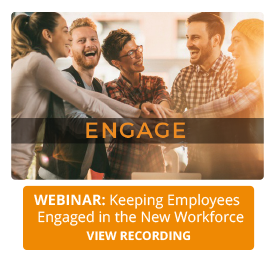Platinum Group is headquartered in Asheville, NC with locations in Charlotte, NC; Greensboro, NC; and Raleigh, NC.
Can Analytics Really Make A Difference?
Workforce analytics is the process of collecting and analyzing workforce-related data in order to make informed, strategic, workforce-related decisions. For example, an HR head with robust workforce analytics data can help a CEO answer questions such as: "How much time is our development team spending in non-critical meetings?" and, "Is time spent working from home helping or hurting employee engagement?" Well-informed CEOs can use answers to these questions to change course as needed. In the above example, if the CEO finds that too much coding time is being lost to non-critical meetings, they can direct the development team to reduce time spent in those meetings and thereby increase time spent coding. Likewise, if working from home is increasing productivity for the finance team, but decreasing productivity for the sales team, then a well-informed CEO can direct their finance team to increase time spent working from home, while directing the sales team to decrease it. In both cases, the CEO's decision will increase productivity for the company as a whole.
The Relationship Between Workforce Analytics, HR, and CEOs
The importance of the workforce in the eyes of CEOs is increasing. Heads of HR are finding themselves in executive meetings, and C-level HR executives are becoming more common. According to a recent survey by CareerBuilder more than two-thirds of CEOs surveyed believe that HR plays a more important role in executive decision-making in recent years than in the pre-recession era. In short, CEOs are realizing that the success or failure of their employees can make or break their companies as a whole. Yet until recently, tracking workforce success or failure in sufficient detail to guide strategic decision-making was far more difficult than it is today.
Employee productivity tools, such as ubiquitous company email and scheduling software, are providing rich data streams to organizations. Once filtered through an organization's Enterprise Resource Management (ERM) system and the appropriate privacy protections, this aggregated data can provide HR with enough information to gauge the success and failure rates of employees with respect to a wide range of metrics, such as engagement and retention.
Predictive Workforce Analytics
According to CareerBuilder, 92 percent of the business leaders they surveyed believe that HR can have a greater impact on strategic decision-making. More than half of that 92% believe that HR could make their impact in part by "providing actionable data and other research" that would help the company's leadership make strategic decisions. Matt Ferguson, CEO of CareerBuilder, maintains that "HR is the new frontier of data science applications in business."
Ultimately, advocates of workforce analytics believe that this new branch of data science will not only provide insight into workforce engagement and specific behaviors in the past, but in the future. For example, workforce analytics at a particular company might show a consistent positive correlation between one key metric, such as the size of employees' professional networks, and another key metric, such as employee engagement. If engagement, in turn, correlates with higher employee retention rates, an HR leader looking over the data could predict that by helping employees increase the size of their professional networks, the company's employee-retention rate may increase, saving the company millions annually in recruiting, hiring and training costs. The CEO, by gaining this insight from HR leadership, could then make an informed strategic decision to institute a company-wide program to encourage employee activities, such as attending industry conferences, that will expand their professional networks.
A Must-Have for CEOs
Through the process of collecting and analyzing workforce-related data with workforce analytics, HR can now help CEOs make more informed, strategic decisions regarding their workforce. As the recent CareerBuilder survey clearly indicates, business leaders in a post-recession era have come to recognize the vital importance of their workforce, and are increasingly looking to HR to help them strengthen it. HR leaders, in turn, are looking to workforce analytics to provide the key data that HR can transform into the predictive insight that will help their CEOs make those decisions. Whether the strategic goal is greater employee retention, engagement or another key metric, workforce analytics is becoming an essential tool to help CEOs reach it.
Platinum Group is a full service human capital management (HCM) resource that allows businesses to manage their payroll, benefits compliance, track time and attendance and other various human resources functions in a way that maximizes efficiency and eliminates redundancies with the platform, iSolved. For more information about Platinum Group or to schedule a demo of iSolved please visit our website.
Be sure to check out Platinum Group's webinars page for upcoming webinars in our Human Capital Management and Business Enrichment Webinar Series. This free webinar series will feature local and statewide professional experts offering valuable insight into successful business practices.




